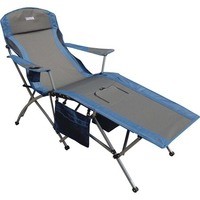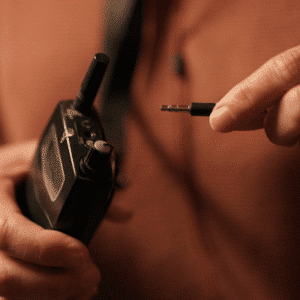Stargazing business uncertainty – reflections on how a power station creates an unwanted situation
Outback Astronomy
- Published on

A nail-biting wait to understand our future …
A stargazing business should never have to face this sort of uncertainty – second guess its investment in signage. It’s like the front door, the way to find the property in the dark.
Outback Astronomy is facing this precise problem as a power station proposed nearby creates business uncertainty. This article provides some background to our serious issues.
As we approach 2025, it’s been three years of living with the threat of a power station being built across the road from our stargazing business.
This is not a solar or wind farm. It’s compressed air technology. It has never been built at scale anywhere in the world – we are the lab rats in an “early adopter” situation, paying a very high price for this unwanted situation.
If it is approved, we expect our business will be impacted immediately through chaos – like noise and light impacts from hundreds of new workers in town, and a lack of local accommodation for visitors during construction. Or if regulators impose strong conditions, maybe impacts will be drawn out over years.
The point is, our future is entirely uncertain. We can’t make life or business decisions without second guessing the outcome.
Right now, the project is still under assessment by NSW Planning, and this also creates uncertainty. You can find more details about this project proposal in NSW Planning’s major projects portal here. You can see only one of our submissions. We are soon to release access to a website we’ve created with facts about the project. We also identify incorrect information that was allowed to spread in the community without correction by Hydrostor, and that Hydrostor has failed to correct in the public arena – location of the project is one key project fact. We and the community were led to believe this project was on Potosi Mine. It is not.
Behind the scenes we’ve worked feverishly to defend our property and tourism attraction experience.
You’d think a power station could not be possible at 1.13km from a business that is so sensitive to its footprint, like the permanent new noise and light that it will introduce.
Why is it possible?
Someone should be asking the project proponent, Hydrostor, and governments that very question. Their proposed power station is not renewable and it is not a battery storage.
In their own words it “will operate as a large energy storage asset, connected to the NSW grid and able to trade large quantities of energy on a daily basis”.
They are currently denying they are “energy intensive” with NSW regulators and you can read all about their arguments in the portal, if interested. Or send us an email and we can forward the relevant documents.
However, anyone who understands the electricity market can see they will take huge amounts of fossil-fuelled electricity from the grid in order to operate as a “large energy storage”.
There is no prior experience from others, anywhere in the world, to understand the answer to the question “why is it possible”.
Our quick, acerbic answer is “nobody cares”.
We are the sole outspoken objectors because we took time to understand the project.
We have been in a lose-lose game from the first time we heard of this project, but we didn’t know that at the time. We began to learn more details from information published in the NSW Planning portal!
For example, people think it is a renewable energy project.
In terms of the proposed project’s impact on the environment, it is a net greenhouse gas emitter!
Hydrostor aim only to be compliant in respect of noise. Noise pollution is also an environmental impact. They will introduce permanent new noise into our environment.
Noise and light
Noise and light impacts are among the less rigorously regulated issues that will impact us in our dark and quiet environment here in outback NSW.
The power station has many noisy elements, like jet-engine turbines that are depended upon to generate electricity and despatch to the grid any time, day and night, for revenue and profits.
They introduce new noise, above our existing quiet rural area, night and day. In our view, the NSW noise guidelines are designed for noisy cities not our quiet rural setting. Two different noise experts in Sydney told us they’d never “seen” such a quiet place (when reviewing our noise data on paper).
Light is hardly regulated unless a local government is on the front foot. Hydrostor produced a lighting report that says our sky is not dark!
If you are receiving this newsletter you may have recollection of the event you attended. If you attended when the Moon was not in the sky on one of our cold winter nights, then you will know that our sky is very dark – so dark you cannot see your hand in front of your face.
We want NSW Planning to enforce application of the Dark Sky Planning Guidelines, which were produced by the NSW Planning Department to protect astronomy near Coonabarabran and all other areas to reduce light pollution.
We have specifically asked NSW Planning to ensure this becomes part of project conditions if it is approved.
Business uncertainty and power station project risk sits with us
That’s why our signage is so flaky, deteriorated, see images attached.
We don’t have the confidence to invest the thousands of dollars needed to replace faded signage at the front of our property.
It doesn’t stop there. We can cite many examples of how Hydrostor’s proposed power station has caused us uncertainty.
Property signs and carparking improvements in limbo
Faded signage illustrates our problem very well.
The power station uncertainty also explains other works not progressed:
- carparking
- landscaping – front of building
- building frontage renovations
- building of our caretaker’s residence (the entire main building was to become the indoor space for café and Outback Astronomy)
- investment in additional café tables and chairs (we will continue to use the same furniture when we reopen next month)
Since 2016 most other major internal and external works have already been completed.
Here are some more examples of uncertainty that impact our guests…
Reclined chairs
Many guests enjoy stargazing from the comfort of a reclined chair. However, we needed to progress a more sustainable option. Our investment in building our own comfortable chairs designed to remain outdoors for just about all weather conditions, has been shelved. We have the design, but not the confidence to proceed.
Binoculars and Merchandise
Should we or shouldn’t we,
- buy more binoculars for use by children in our sky shows?
- invest in our branded merchandise, like beanies, in time for winter 2025?
- expand our online shopping, and other features of our website?
We simply have too much uncertainty to know how to decide!
Pricing Discounts for Children and Pensioners
We stopped pricing discounts initially because of the pandemic. They were to be reintroduced early in 2023. We simply could not reintroduce discounts – it was at this same time Hydrostor told us they may not be noise compliant. We had no choice as we reduced our events scheduled online in order to work on our detailed submissions to NSW Planning in defence of our business and lifestyle. We face too much uncertainty still to make such changes.
Recruitment and Training
We are unable to recruit and train staff in our uncertain environment. We cancelled work experience with students from regional and Broken Hill schools (with astronomy, maths and physics interests), and university students (astrophysics). This means fewer events can be scheduled. We are unlikely to develop events like meteor shower viewing sessions and astro-imaging nights, or develop our local astronomy club, until we know for certain we can continue to exist as business without fear of being ruined by Hydrostor’s power station.
Café Reopening Delayed
Staffing of the café is another quandary. We currently plan to reopen it in January 2025, but must delay on major decisions concerning staffing. The café should have reopened by May 2023 at the latest, after concreting work at the back of the property was completed.
* * *
We have been building a business from the ground up. We purchased this property for stargazing in 2015, settlement was early 2016. It was a dilapidated, ramshackle building with unwieldy grounds. We have invested significantly here with our own money, foregone many family events and taken no holidays while business building. Just after the pandemic and its last flurry of significant impact on us, ie early 2022, when we thought we were over the biggest hurdle of setting up our property in line with our 2014 vision – to become one of the best astro-tourism experiences in Australia – Hydrostor arrived on the scene.
We were well on the way to achieving our vision very early in our start-up. In our first year, we were mystery shopped by Lonely Planet. A rep attended our naked eye pop up astronomy session. Not long afterwards we were listed among the top 26 “of the world’s hottest new experiences for 2015”. See the map below; number 16 points to our place in Broken Hill. We are still so proud of this achievement. The Lonely Planet description, a little dated, is reproduced below as an image.
By 2019, we won gold for our tourism attraction business at the NSW Tourism Awards. In 2020, early March, we attended the national awards in Canberra, representing the State of NSW.
We fought so hard for our astronomy tourism business to survive the pandemic, only to be knocked down by this power station project’s uncertainty.
We provided all this information and much more to Hydrostor.
We have provided some insight to the level of our fight and the uncertainty we face.
It is a high financial stakes game and a nail-biting wait to understand our future.
We sincerely thank all of our guests, many of whom have returned 3, 4 or 5 times, to enjoy a night under the stars. Let’s see if we are here as usual, this time next year, December 2025!
Season’s Greetings & Best Wishes for the New Year
Outback Astronomy






